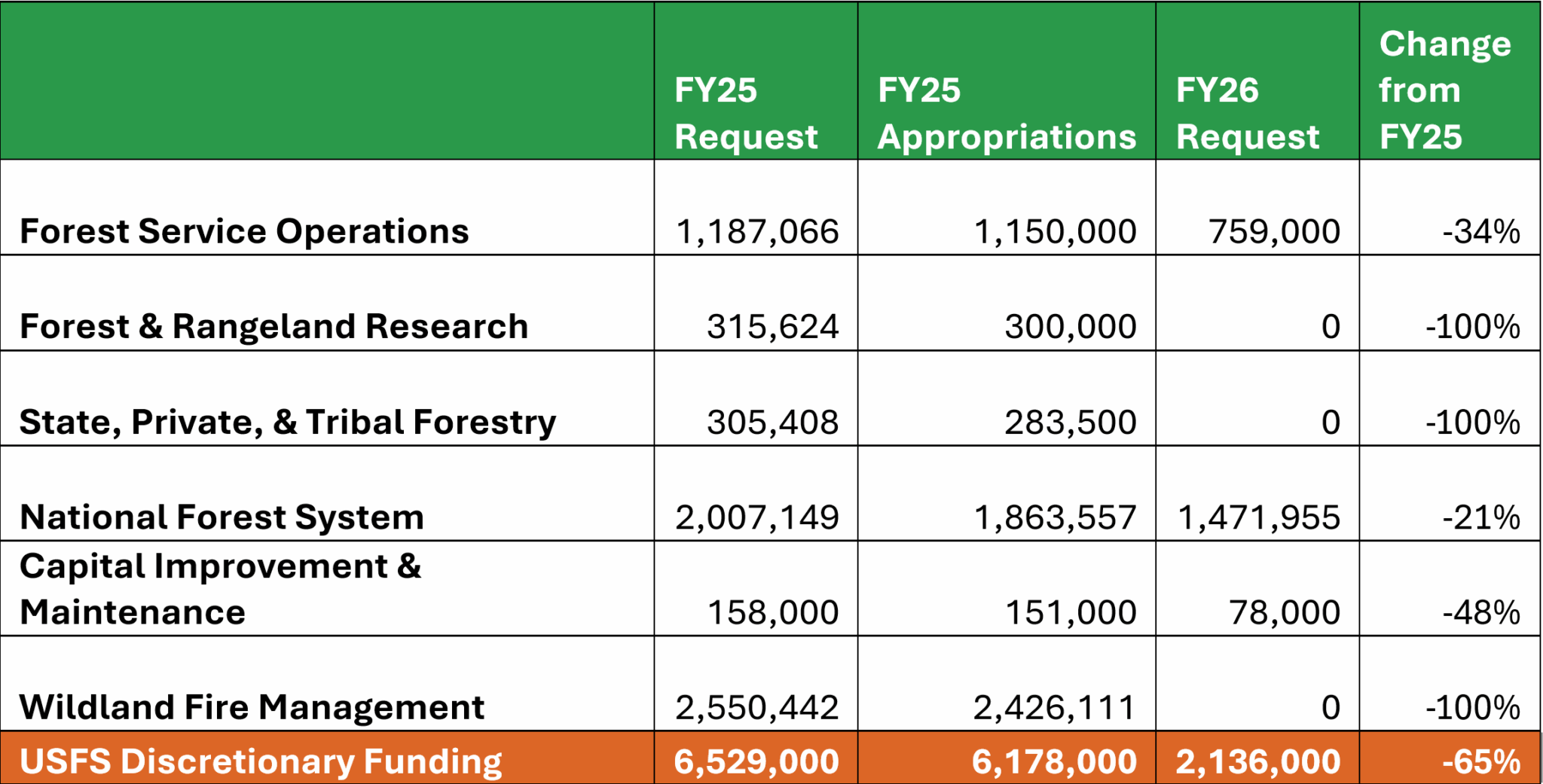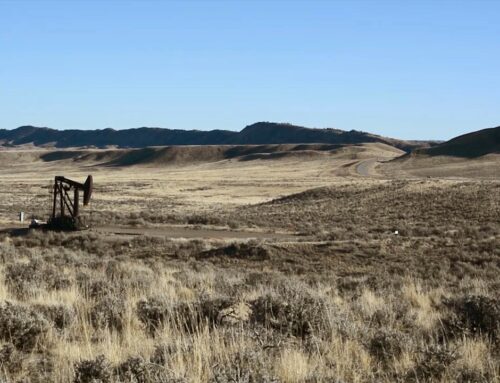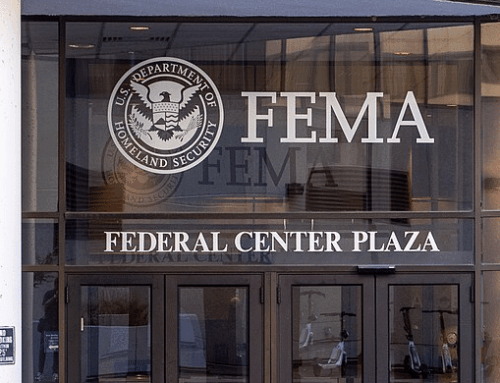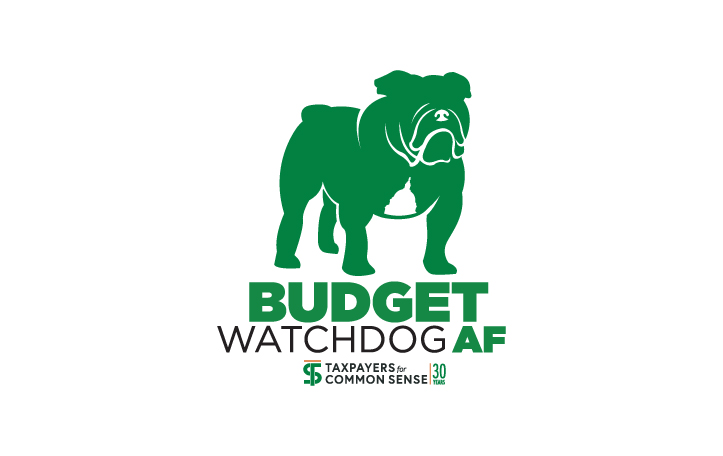The President’s fiscal year (FY) 2026 budget request for the U.S. Forest Service (USFS) proposes widespread cuts, the elimination of several programs, and the transfer of all federal wildfire funding responsibilities to a new agency within the Department of the Interior (DOI).
Building on the “Skinny” Budget released May 2, the USFS FY2026 Budget Justification proposes major structural and funding changes.
Forest Service Budget Requests and Appropriations ($, thousands)

*USFS will also be appropriated an additional $945,160,000 in FY2026 supplemental funding through the Infrastructure Investment and Jobs Act (IIJA) and the Inflation Reduction Act (IRA)
The President’s FY2026 Budget would eliminate funding for both Forest and Rangeland Research and the State, Private, and Tribal Forestry, stating it will “strategically utilize existing carryover balances to responsibly and effectively close [these] program[s].” It would also shift all funding for Wildland Fire Management from the USFS to the DOI. For remaining Forest Service programs, the budget proposes steep funding reductions, ranging from 21% to 48%.
- Forest Service Operations, which covers employee salaries and other administrative expenses, would be reduced by one-third. The funding reduction is evenly spread across all FSO line items—Facilities Maintenance and Leases, Information Technology and Centralized Processing, Organizational Services, and Salaries and Expenses—and is part of the agency’s effort to ‘right size its footprint.’
- Forest and Rangeland Research, which houses the agency’s research programs, would be eliminated. The Joint Fire Science Program—an interagency research partnership between the USFS and DOI—and Forest Inventory and Analysis program—a forest census— would both continue to be funded under different USFS program areas.
- State, Private, & Tribal Forestry, which provides technical and financial assistance to nonfederal landowners, would be eliminated. This includes programs that directly and indirectly support wildfire management, such as National Fire Capacity and Rural Fire Capacity, which fund state and local efforts.
- National Forest System, which oversees the management of federal grasslands and forests, would be reduced by 20 percent. As indicated in the Skinny Budget, the Collaborative Forest Landscape Restoration Program—which provides 50% cost-share grants to regional USFS offices to implement and monitor ecological restoration projects on priority forest landscapes—would be eliminated. Only Forest Products (plans, prepares, and executes timber sales), Minerals and Geology Management (manages energy and mineral development from federal leases on NFS lands), and Law Enforcement would be funded at or near their current levels.
- Capital Improvement & Maintenance, which supports USFS infrastructure like roads, trails, and facilities, would be cut by half.
- Wildland Fire Management, which funds the personnel, equipment, and immediate post-fire risk mitigation necessary for wildfire suppression on federal lands, would be moved entirely from the USFS to a new agency at DOI. More on the proposed U.S Wildland Fire Service here.










